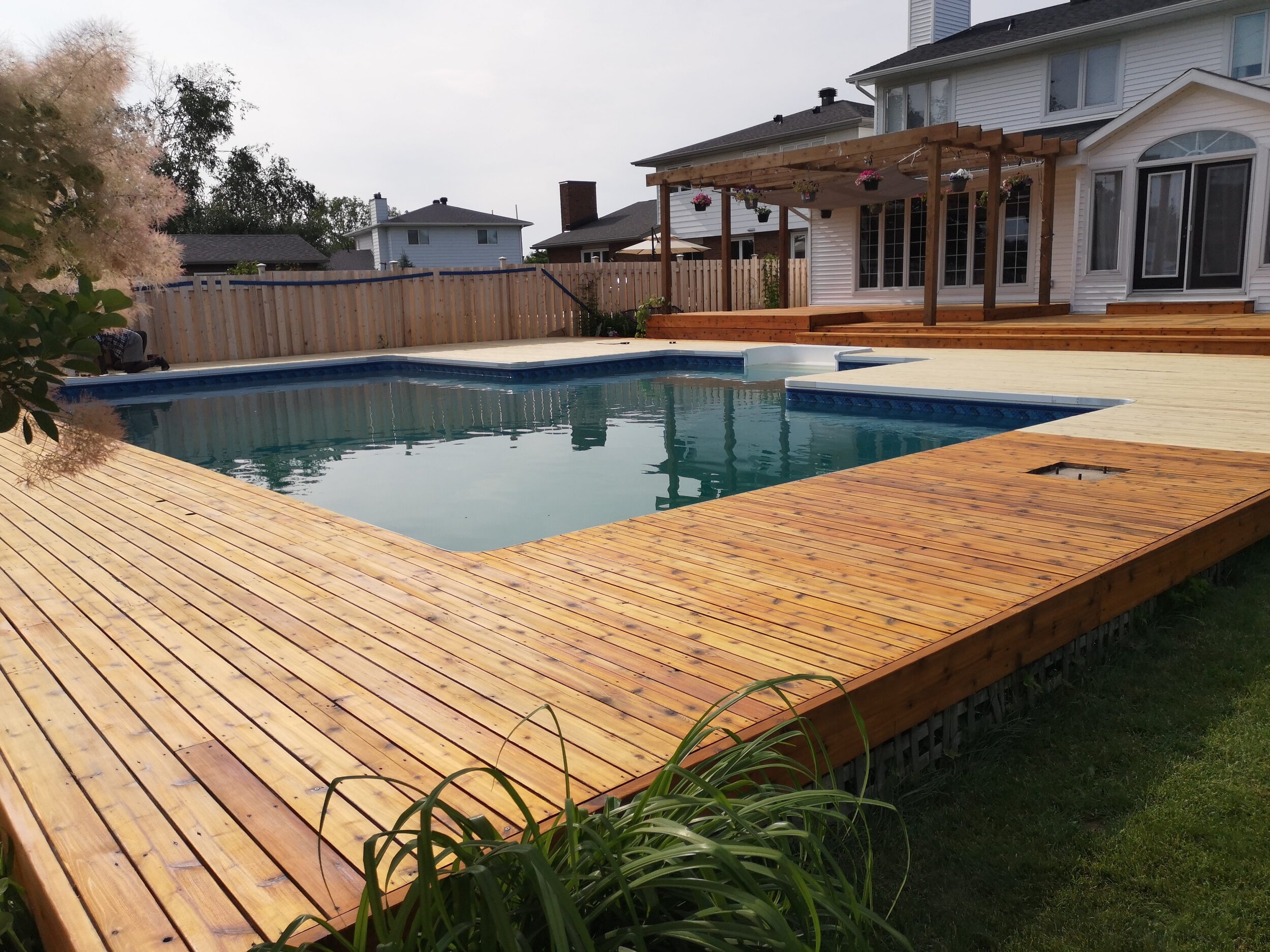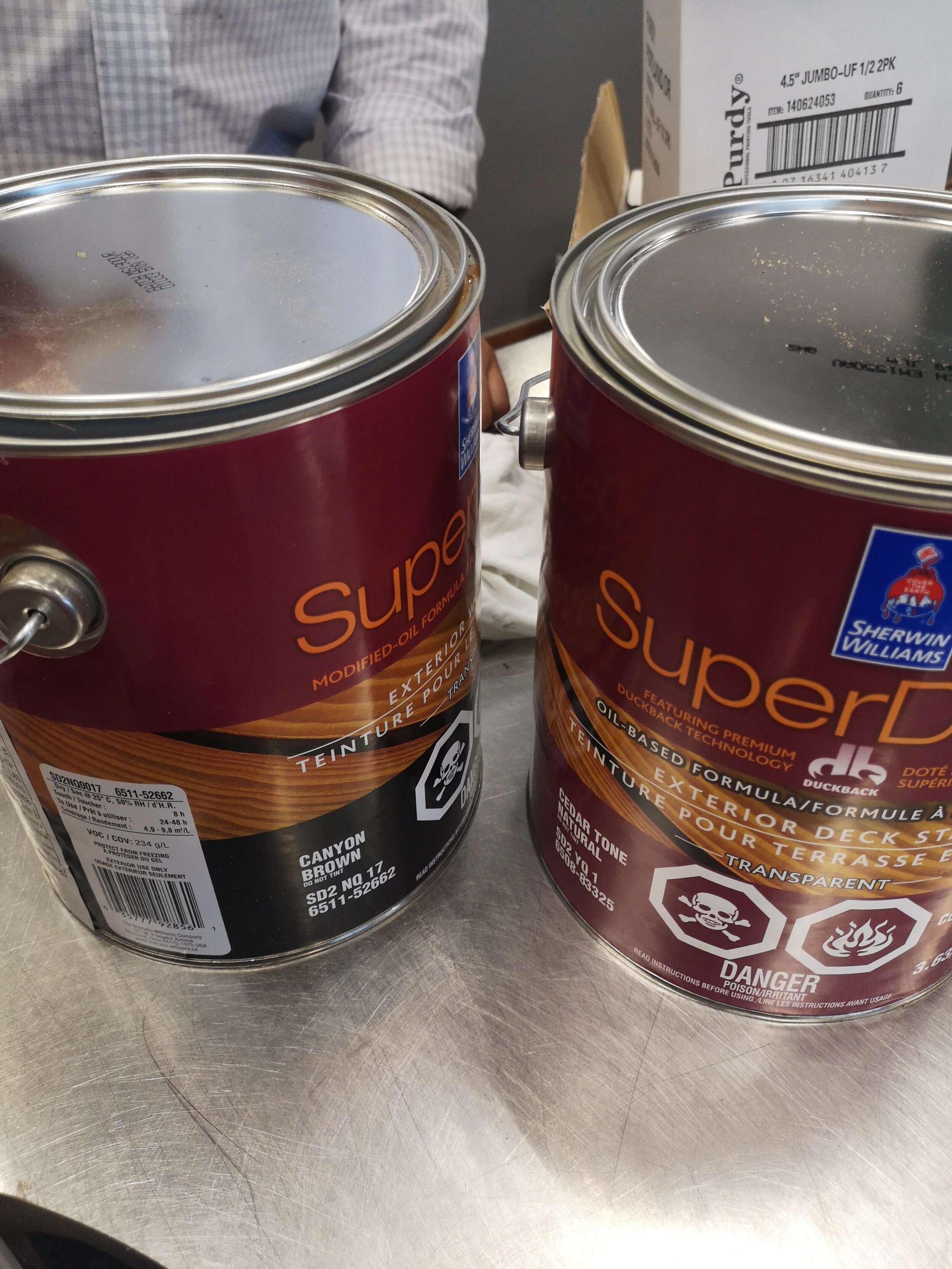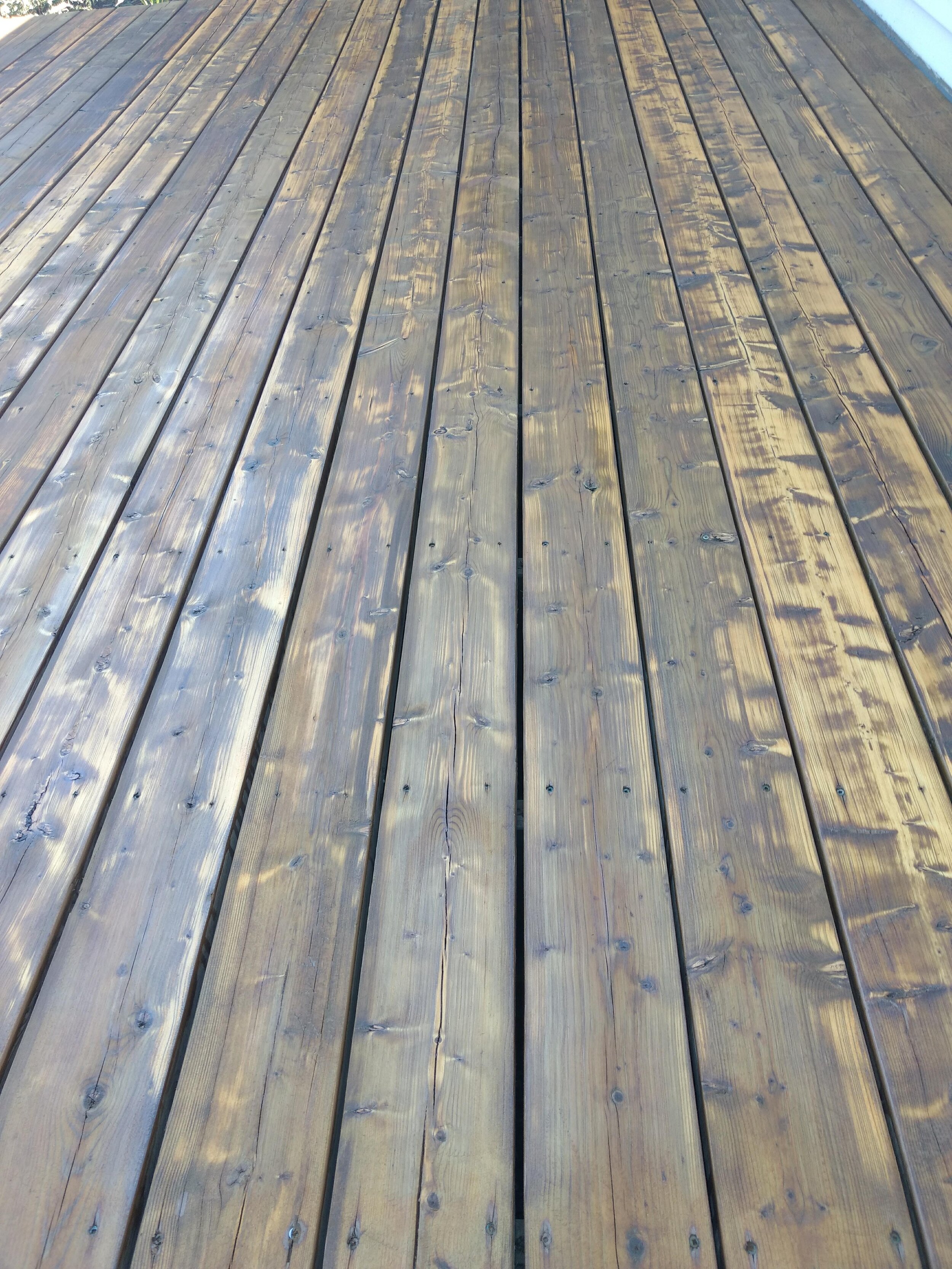
Never Peel Again: The Sand & Stain Blog
Every post, recommendation, and product we discuss is to help you on your journey maintaining your deck, fence, & exterior wood so it never blisters, cracks, or peels.
Never Peel Again: The Sand & Stain Blog
Brand new deck / old faded wood / peely previous stain—no matter where you are in your deck & fence staining journey, we’re here to help. Scroll & enjoy!
Why Solid Stain / Paint Fail As Exterior Wood Coatings (And What To Do If Your Deck Has This Finish)
There is no question that solid stain is the absolute bane of everything we believe in at Sand & Stain. Our promise to you is captured right in our original tagline: ‘Never Peel Again’—and if there’s one thing we’re certain of, it’s that solid stain will peel in Canada, no matter who applies it.
Probably the biggest reason solid stain fails, is because it acts much like a paint opposed to a stain. Paint protects by forming an outer film coating and is built up with layers and is far too thick to ever penetrate the wood. That’s why when you see solid stains or paint on exterior wood like a deck or fence, it peels off in pieces / chunks and leaves completely bare wood behind.
I’m surprised solid stain is even classified as a stain—it really should be called a paint, because it basically is no different than a can of flat sheen exterior water based paint. Sometimes people ask why we don’t restore decks, fence, and siding projects with solid stain and paint anymore, and there are many reasons for that:
Is It Bad To Leave Your Deck & Fence Wood Unfinished? (Mill Glaze Explained)
You’ve got new wood and you want to protect your investment. But you’ve heard horror stories of peeling decks and dread the thought of endless maintenance. Perhaps you even like the faded gray look. What are your options? Can it be possible to leave your newly built wood deck, fence, or siding entirely unfinished… Forever?
Here’s a quick dive into the pros and cons of unfinished wood followed by an explanation of mill glaze and what you need to know about the first time finishing wood.
Truth Revealed: Water Based vs Oil Based Stain Against Deck Peeling
Prospective clients often ask me if water based stains are better than oil based stains, or what will last the longest between transparent / semi-transparent / solid stains, or if newer age technology hybrid stains are the way to go.
I always answer that question with another question…
Do you want a peeling problem or a fading problem?
The truth is, it doesn’t matter if they hire me, my competition or do it themselves. The result is the same: either the deck will peel or the deck will fade.
When it comes to wood decks like cedar or pressure treated, there is no such thing as ‘zero maintenance’ unless you want your wood becoming increasingly gray and dirty over time.
The closest thing to maintenance free wood is charclad, Japanese style charred wood building materials and decor from our sister company.
Even after a short time reading our articles, (not to mention the dead giveaway from our tagline, Never Peel Again), you would know that our philosophy fully endorses a fading strategy versus peeling.
Since day one, literally every single business decision and recommendation we make is to ensure your deck will never peel.
You can check out our 3 part Sand & Stain System here, or continue reading about the difference between water based and oil based stain.
5 Reasons You Should Never Pressure Wash Your Wood Deck
You want the best for your deck in care, protection, and aesthetics. Washing seems like a no-brainer to maintain it, so why not make your job easier with the power of a pressure washer? Here are 5 reasons we don’t pressure wash decks in our business, and why we think you shouldn’t pressure wash your deck either.
NOTE: We focus on the maintenance and care of wood decks and do not recommend pressure washing any of them (Cedar, Ipe, Accoya, Kebony, Thermory Ash, etc.) Pressure washing may be perfectly fine for your composite or PVC deck.
We Don’t Charge By The SqFt: 12 Considerations When Comparing Quotes
As a specialized contractor, there are unique considerations when quoting. However, this list below is general enough that the principles can be applied to contractors in almost any niche.
A common question we get is: ‘How much does it cost to sand and stain a deck?’ or ‘How much do you charge per square foot?’
Yes, square footage is definitely a factor in quoting a deck, but our business is not a commodity that should be compared strictly on a square foot basis when there are other important considerations to give a fair quote.
To help answering similar questions for future clients, here are 12 things to consider when comparing quotes from contractors, and more specifically what we assess prior to sending official quotes.
Less Is More: Why One Coat Of Stain Conquers Two Against Deck Peeling
Before we get into why one coat is better than two to both protect your deck and prevent it from peeling, we need to go over a few assumptions about your deck, types of stain, and prep. If your deck consistently peels every year, no matter what you do, read our previous post, Why Your Deck Peels Every Year, for reasons about why that might be the case.
So, you invested good money into your brand new deck, or bought a house that came with a gorgeous deck in the backyard. You want to protect that investment as best you can, so the first inclination is to put as many protective layers on that wood as you can—’the more the better!’, you think to yourself.
Unfortunately, too much product is one of the surest ways to end up with a peeling deck—especially if it’s a thicker, water based formula.
How To Maintain Your Deck So It Never Peels
Your deck turned out beautifully. You’ve made memories with your family, hosted gatherings, dined friends, and appreciated a quiet place to escape with a book. You followed the Sand & Stain System to prep and finish your deck. Only that was last year. Maybe even two years ago…
So how do you keep your deck looking fresh and properly protected without pulling out the sanders or hiring contractors every year?
We’ll show you exactly how to get the most out of your deck for as long as possible before sanding again with no blistering, cracking, chipping, or peeling. Guaranteed.
How To Stain A Cedar Deck
The deck has been fully been prepped. Sanding is complete, and so the only thing left to do is the most satisfying step: finishing with your colour of choice for protection, and that undeniable beauty that only a true penetrating oil stain can provide.
There are a few different ways you can tackle this. To save you time, here is how we recommend doing this, and how we have served happy clients for years in our own business. This is is especially important to know, because you’ll be able to get away with stain reapplications without sanding again for years (perhaps forever) using the these tools, techniques, and products.
NOTE: The process for finish staining pressure treated wood is the as staining cedar—however, the prep is very different. If you have pressure treated wood, check out our post 5 Reasons You Should Never Sand Pressure Treated Wood here to make sure you do it right the first time.
How To Sand A Cedar Deck
Sanding is the first step to setting up your deck, fence, or exterior wood project for longevity and success. It may not be the funnest activity you’ll ever do, but if this crucial prep work is done how we recommend it, you won’t have to prep sand it for years—and perhaps ever again.
Unless you have pressure treated wood, do not skip this step. You need to sand your cedar wood deck, even if it’s brand new and hasn’t grayed yet. This is because it has what’s called mill sheen on its surface that even penetrating oils will not be able to soak into as easily as they should.
Remember, the two biggest reasons a deck fails (peels, blisters, cracks, chips, etc.) is because of: 1) poor prep work, and 2) product quality or type. Here’s how we avoid that first reason and how to get it right the first time.
Part 1: What You’ll Need …
SuperDeck vs SuperDeck: Sherwin-Williams 2020 Oil Stain Reformulation
This article is far more than a product comparison. We at Sand & Stain have been using the Sherwin-Williams SuperDeck Transparent Penetrating Oil as the main product in our business for over 10 years. It’s a huge part of the reason we have been able to keep our #1 promise to our clients (also our slogan): Never Peel Again.
Suffice it to say, it came as a shock in the summer of 2020 that this exceptional product was reformulated without so much as a notice or warning. Not even the local Sherwin-Williams store managers knew this was being rolled out (at least not in any of my local Ontario or Quebec stores.) Staff simply re-ordered more product as normal, and in came the new SuperDeck. Aside from a brown strip on the bottom of the can and slightly difference literature (left vs right in pic below), it’s practically an unnoticeable difference.
Until you open the can…
Why Your Deck Peels Every Year
We get calls for staining brand new decks, restoring old faded gray wood decks, and everything in between. Without question, the number one reason people seek help for their deck is out of sheer frustration that their deck peels every single year, no matter what they do, or who they call.
Some feel gypped for buying the most expensive product in the store only to see it fail after its first winter. Others are completely discouraged their deck is chipping after spending countless hours sanding it. Neither are wrong to feel this way. There are many reasons a deck can fail and you might have everything exactly right except for one piece of it.
The two biggest reasons a deck peels are…
5 Reasons You Should Never Sand Pressure Treated Wood
You’ve got pressure treated wood and you want to maintain so it lasts and looks its best in the process. You may have heard or read in our articles that sanding prep work is essential before staining, sealing, or finishing a deck.
This is true to remove mill sheen on new cedar lumber, removing peeling stain from a deck, or periodically (after several years or re-coats with a penetrating oil) to restore it before staining it again. The exception to this is: pressure treated lumber.
Here are five reasons reasons you should never sand your pressure treated wood…












